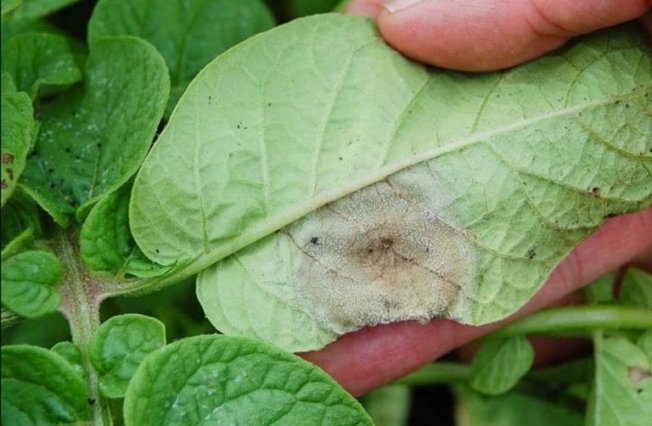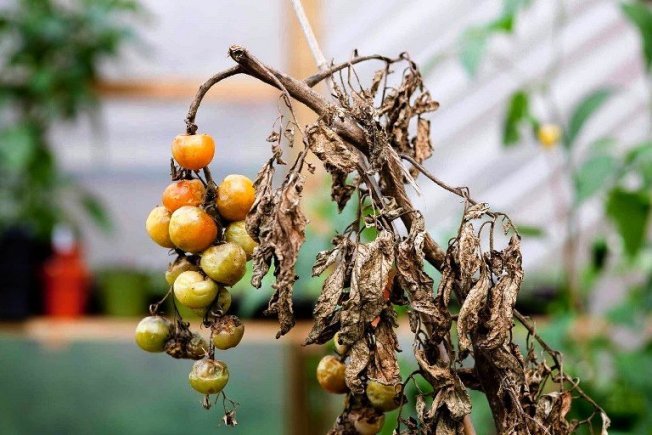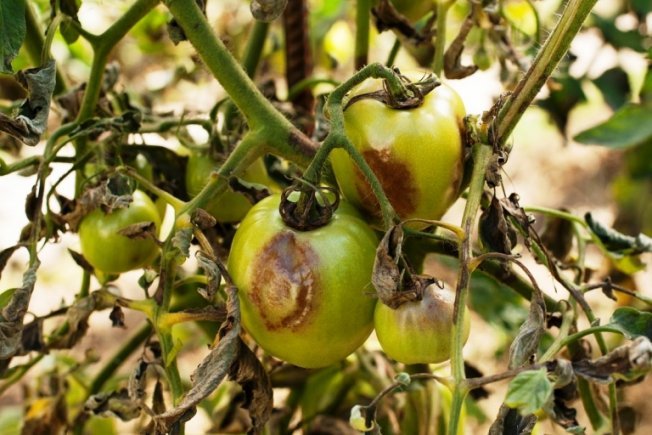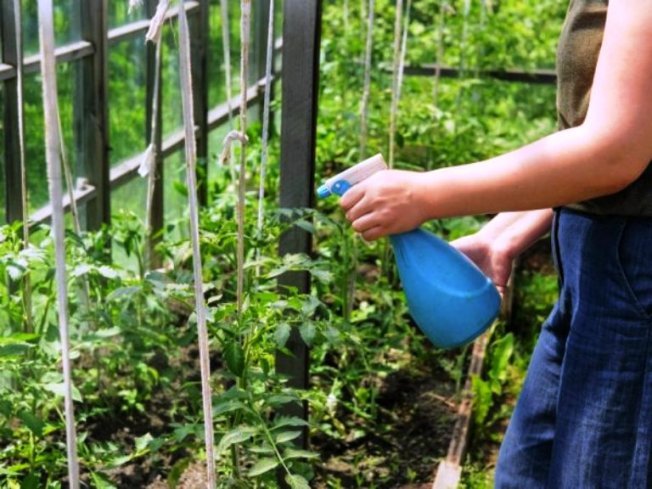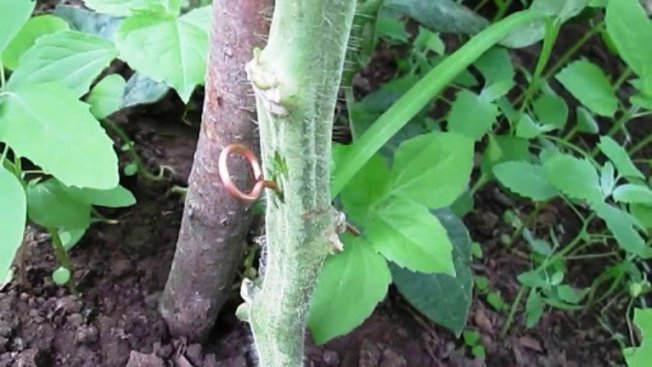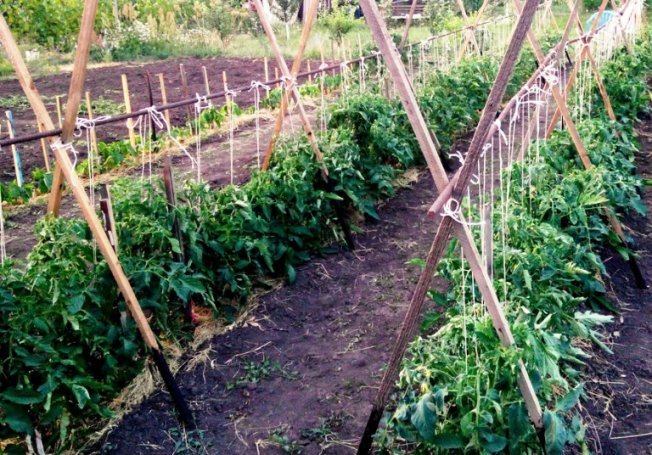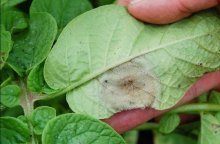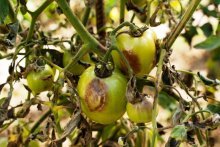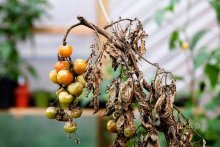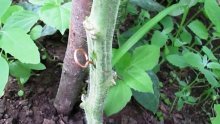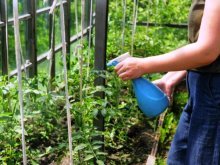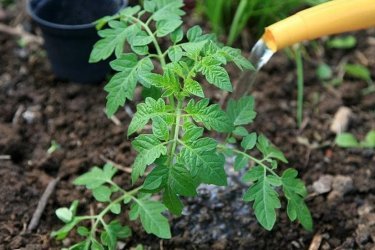Late blight of tomatoes, photo and description of symptoms of damage, treatment methods

Late blight is a dangerous disease caused by tiny micellar single-celled parasites. The disease quite often affects tomatoes; gardeners often look for its description and photo, because knowing the symptoms, you can start treatment in a timely manner and save the harvest.
Content:
- Late blight of tomatoes: photo and description of the disease
- Factors promoting development
- Symptoms of the lesion
- Treatment of late blight: fungicides, biofungicides, antibiotics
- Folk remedies
- Prevention measures
Late blight of tomatoes: photo and description of the disease
The disease can affect all members of the nightshade family; potatoes and peppers, eggplants and tomatoes can be affected. Garden strawberries and buckwheat are often infected.
In 2-3 weeks, a harmful fungus can hit an entire tomato plantation on the site, in order to destroy 1 plant it will take 3-4 days.
The fight against late blight of tomatoes is a rather serious problem, since the disease usually begins to develop during the period of fruit ripening, when it is impossible to take radical treatment measures.
Microscopic micellar parasites can be located on the material from which greenhouses are made, on equipment, on seeds or the remains of dead plants.The most common source of late blight is potatoes: fungal spores can overwinter on tubers or in the soil in areas where there were potato beds.
Let's see what late blight of tomatoes looks like, in the video it can be seen in more detail than in the photo, and we will also learn an interesting method of treatment:
Factors promoting development
Late blight most often affects tomatoes in early August, when the nights become cool and the days are still hot like summer.
The following factors provoke the active development of the fungus:
- decrease in air temperature;
- dense plantings, lack of air circulation;
- frequent fogs and dew;
- weak plants that do not receive proper care.
Symptoms of the lesion
Late blight can be recognized by the following signs:
- the appearance of a white coating on the leaves;
- darkening of the bottom of the sheets and the appearance of brown spots on them;
- blackening and drying of leaf plates;
- the formation of brown spots on fruits;
- mummification and rotting of fruits;
- the appearance of brown stains on harvested unripe tomatoes.
Affected fruits become covered with brown or gray spots that have an irregular shape. These defects can be seen in the photo. Spots may appear already at the stage of fruit ripening.
Note that there may be other reasons for blackening of fruits, including: excessive dryness of the soil and excessive watering, excess fertilizer.
Treatment of late blight of tomatoes, the best drugs
Antibiotics, biofungicides, and chemicals are used to treat fungal infections of tomatoes.
Let's look at the most popular fungicides and, for clarity, add information to the table.
| Product name | Dosage per 10 liters of water | How to use |
| Quadris | 10g | Stop spraying 10 days before harvesting the first harvest. |
| Ridomil Gold | 25 g | The treatment is repeated every 2 weeks during the growth period. Under conditions that provoke the development of fungus, plants can be treated once every 10 days |
| Thanos | 12 g | Plants are treated during the growing season every 10 days. The advantage is that a protective film is formed on the sheets; the product can stop the disease. Popular with gardeners |
| Topaz | 2 ml | Has a wide spectrum of action. Used for soaking seeds and treating plants. Spraying can be repeated every 10 days |
| Fundazol | 10 g | Effective for the prevention and treatment of the disease when its first signs appear. Spraying can be repeated after 10-12 days |
| Acrobat MC | 40 g | Used as a prophylactic and to combat the disease when the first signs appear. treatment is repeated after 14 days |
The proven old one is also used Bordeaux mixture. For spraying, prepare a 1% solution, repeat treatments every 10 days. Stop when the fruits begin to turn red.
The disadvantage of fungicides is that pathogens quickly develop immunity to the drug. those. should be changed sometimes.
Biofungicides containing bacteria are less effective, but safer for people. capable of fighting fungi.
The most popular universal remedy is Fitosporin. For 10 liters of water you will need only 5 g of the drug. Spreading throughout the plant’s vascular system, it suppresses viruses and fungi. Used for soaking seeds, treating the soil before planting, and watering the roots.The frequency of spraying is every week or 2, depending on weather conditions.
The use of pharmaceutical antibiotics is no less effective. Five Trichopolum tablets are diluted in 5 liters of water, liquid soap is added and the plants are sprayed. Prepare the solution in the required quantity; it cannot be stored. When washed off by rain, the treatment is repeated. In sunny weather, spraying is carried out every 15 days. Three weeks before the planned ripening of the crop, spraying is stopped.
Folk remedies
Late blight can be combated using completely harmless means that are popular among summer residents.
Of course, they are suitable for growing tomatoes in small beds:
- mulching reduces humidity, eliminates contact of leaves with wet soil, microflora useful for plants develops under the protective layer;
- piercing the stem with copper wire at a height of 5 cm from the ground level, copper serves as a barrier for infection and fungal spores;
- garlic infusion, a good prophylactic for treating bushes;
- spraying with whey or kefir dissolved in water, lactic acid kills fungal spores, treatments are carried out weekly;
- spraying with a decoction of tinder fungus or infusion of pine shoots.
The greatest effect from folk remedies can be obtained by using them at the first signs of plant damage.
Prevention measures
In order not to observe diseased plants in the beds, it is better to study tomato late blight from a photo, read its description and treatment, and also learn about preventive measures that will help prevent a serious illness.
The first commandment of a gardener is not to create conditions for the development of fungal infections with your own hands!
Take advantage of these helpful tips from experienced vegetable growers:
- separate potato and tomato beds;
- do not thicken the plantings, maintain the correct distance when planting tomatoes;
- pinch the leaves of the lower tier, trim the bushes in a timely manner, this will ensure high-quality ventilation;
- do not leave plant residues on the beds, remove weeds;
- water the tomatoes at the root, sprinkling provokes diseases;
- perform complete mulching of the soil;
- systematically use means to prevent fungal diseases;
- follow crop rotation recommendations;
- do not neglect the rules of fertilizing and do not overuse watering;
- Use Trichodermin or Fitosporin to treat soil against late blight.
If it is impossible to influence the weather, then it is within our power to choose varieties that are relatively resistant to late blight. Early and ultra-early ripening hybrids and varieties are less susceptible to the disease. Late varieties and tomatoes planted in greenhouses in the fall require more careful care and prevention. Tall tomatoes get sick less often.
Let's watch a useful video about late blight prevention:
To prevent tomatoes from suffering from late blight, study the description and photo of the disease, and begin treatment when you notice its first signs. To enjoy the harvest, even in not the most favorable year, follow the recommendations for caring for the beds and do not ignore preventive measures.

